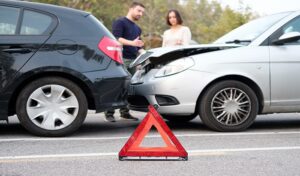
How Often Does Financial Abuse Occur in Nursing Homes?
Financial abuse is a fast-growing form of exploitation in residents of nursing homes that can have devastating effects. This type of abuse can be just as damaging as physical or

Financial abuse is a fast-growing form of exploitation in residents of nursing homes that can have devastating effects. This type of abuse can be just as damaging as physical or

Motorcycle accidents often result in devastating outcomes, so understanding how to protect yourself as an operator is essential. Today, we’re diving deep into the statistics behind motorcycle accidents and sharing

Medication errors injure thousands of people every year in the U.S., but fortunately, there are ways to protect yourself against this statistic. Continue reading to learn more about medicinal errors

Accidents are traumatic events that can leave a lasting impression on everyone involved, especially if the accident included a car rollover. Car rollovers are not incredibly common but tend to

Wrongful injury is a broad field that encompasses numerous kinds of injuries; however, there are a few types of cases that are common in the U.S. Continue reading to learn

Sexual abuse statistics reveal that this is a significant public health problem in the United States. Experiencing sexual abuse can affect how a person thinks, acts, and feels over a

Alcohol-related accidents can be traumatic, but dram shop laws in Utah offer injury victims a powerful legal option to receive compensation. Dram shop laws hold establishments responsible to properly serve

Tire blowouts can happen in the blink of an eye, forcing drivers to react quickly and in a dangerous manner. If drivers are unprepared for this type of incident, they
UTAH INJURY LAWYERS
Flickinger • Boulton
• Robson • Weeks
PROVO OFFICE
3000 N University Ave
Suite 300
Provo, UT 84604
SOUTH JORDAN OFFICE
10393 S. Temple Dr.
Suite 103
South Jordan, Utah 84095
OFFICE HOURS
Monday- Friday: 8AM-5PM
Saturday-Sunday: Closed
*Disclaimer: the information provided by this website is for informational purposes only and should not be considered legal advice or a substitute for competent legal counsel.
**SMS consent and contact phone numbers will not be shared or sold to third parties or their affiliates for any purpose.
© 2025 All Rights Reserved.